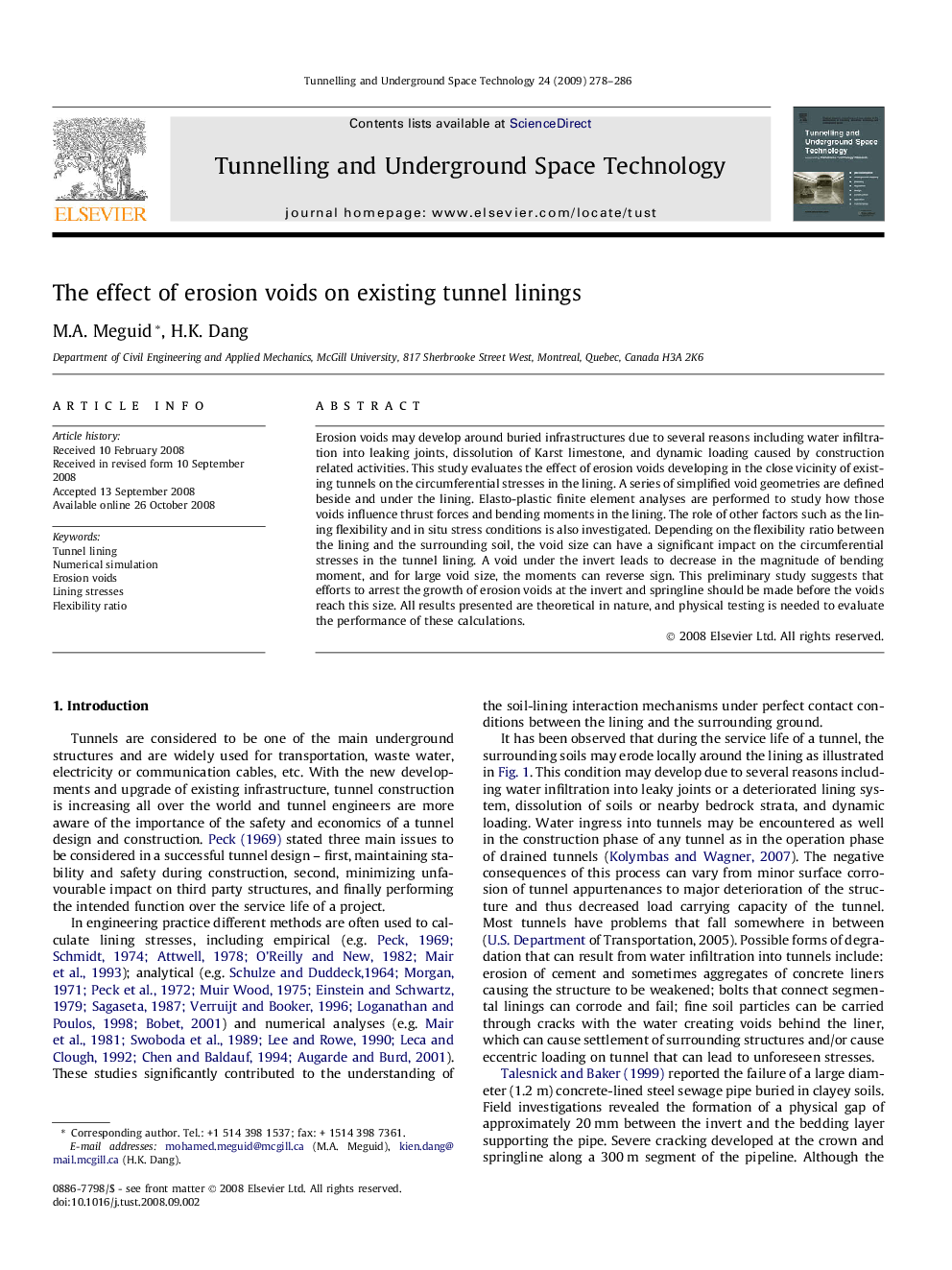| Article ID | Journal | Published Year | Pages | File Type |
|---|---|---|---|---|
| 312675 | Tunnelling and Underground Space Technology | 2009 | 9 Pages |
Erosion voids may develop around buried infrastructures due to several reasons including water infiltration into leaking joints, dissolution of Karst limestone, and dynamic loading caused by construction related activities. This study evaluates the effect of erosion voids developing in the close vicinity of existing tunnels on the circumferential stresses in the lining. A series of simplified void geometries are defined beside and under the lining. Elasto-plastic finite element analyses are performed to study how those voids influence thrust forces and bending moments in the lining. The role of other factors such as the lining flexibility and in situ stress conditions is also investigated. Depending on the flexibility ratio between the lining and the surrounding soil, the void size can have a significant impact on the circumferential stresses in the tunnel lining. A void under the invert leads to decrease in the magnitude of bending moment, and for large void size, the moments can reverse sign. This preliminary study suggests that efforts to arrest the growth of erosion voids at the invert and springline should be made before the voids reach this size. All results presented are theoretical in nature, and physical testing is needed to evaluate the performance of these calculations.
